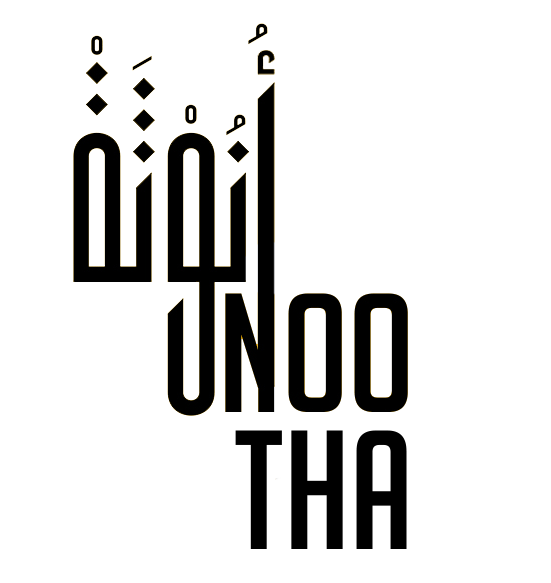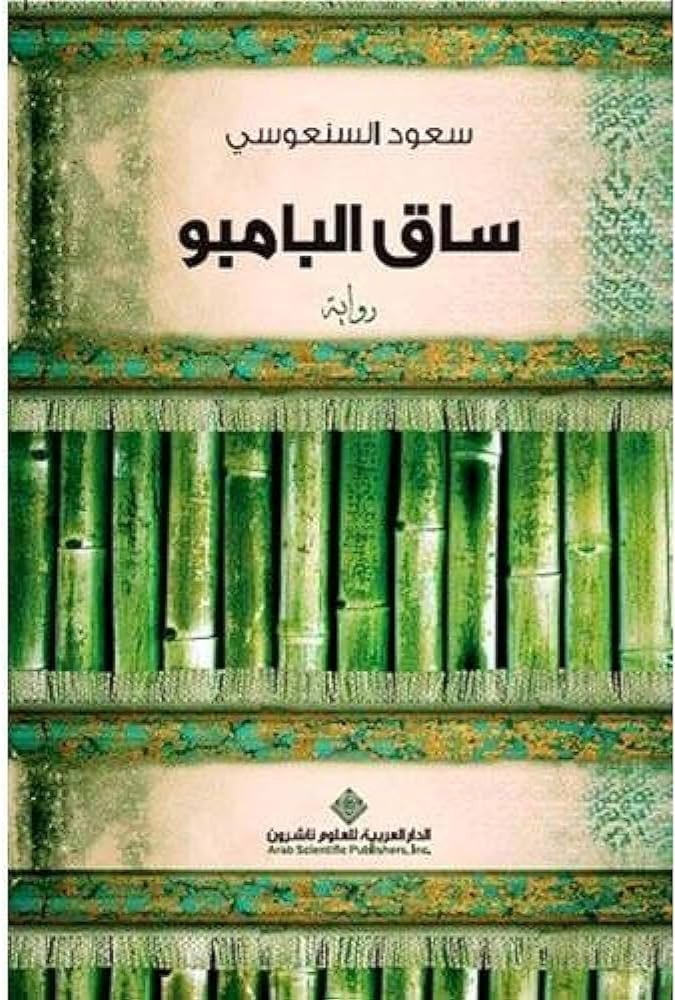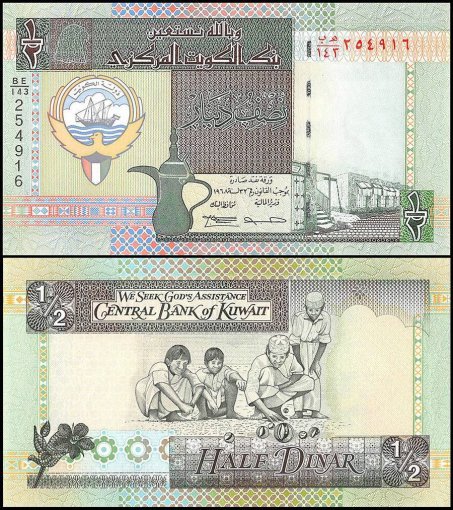½ Filipino = being a fractioned Filipino in the Gulf
by Farah Fawzi Ali
Hi, I am ½ Filipino and ½ Egyptian.
Mathematical fractions, percentages, and ratios have always been an integral part of understanding my mixed identity. My heritage are parts that make a whole. While biologically true, identity and heritage do not simply manifest as a mathematical equation, such as ½ Egyptian + ½ Filipino = Farah.
My existence as an Egyptian-Filipino has roots in migration patterns, labour laws, and work opportunities. These were the seeds that facilitated waves of migration into the GCC. Waves which brought my parents to the region in the 1980s and 1990s. In Egypt, Anwar Sadat’s Infitah or Open Door Policy, introduced in 1974, called for a transition from socialism to privatisation and market capitalism. While the Infitah is famously known for bringing the rise of neoliberalism in Egypt, it similarly encouraged the flow of Egyptian labour outwards to the Gulf region and beyond. My father, who had worked as a doctor in the Egyptian Ministry of Health, had the opportunity not only to travel to the GCC but had ability to return to his previous job in Egypt if working abroad did not work out (Nasserist Socialist policies remained in effect in public sectors, which offered government employees permanent job posts until retirement).
In the Philippines, Ferdinand Marcos’ Labour Export Policy, also introduced in 1974, encouraged overseas employment as a temporary solution to the national economic struggles of the time, though migration from the Philippines became beyond temporary in the following decades. Persistent expansion of its networks and demand brought rise to individuals like my mother to migrate, one of the many ‘Overseas Filipino Workers’ or OFWs dispersed around the world to establish life outside the Philippines. OFWs have become so integral to the Philippine economy that the government formed the Department of Migrant Workers in 2022 to regulate migration flow and needs, making diaspora a permanent feature of the nation’s makeup.
Growing up I often felt assured of my Egyptian identity. Despite my weak proficiency in Arabic then, no one ever doubted or questioned my Egyptian ancestry. My heritage was problematically dictated through the gaze of patriarchal Arab kinship ties strongly ingrained where I was brought up. It was powerful enough for people to irrationally ignore my visibly South-East Asian eyes and straight hair,. They disregarded that my mother had any involvement in my being. Since my father is Egyptian, I am therefore 100% Egyptian.
But when society wants to focus on my Filipino ancestry, blood and body are suddenly split down the middle, consisting of biological genes that operate like water and oil. Never to be mixed, always be seen as two separate entities. A specimen that needs to be dissected. A rare mix needed to be spliced to discover how she came into existence. I am combated with speculations, assumptions, and enforced stereotypes. Suddenly, a simple mathematical equation does not add up anymore: I must prove my Filipinoness now for people to believe it. Often, I diffuse the situation with a forced performance of using a Filipino language, explaining my mom’s life story, or telling the riveting tale of how my parents met through mutual friends at a social gathering like any expat would in the Gulf (sorry to shatter the exotic love story you had in mind).
Discourse and nuances exploring mixed Filipinos in the Gulf remains to be what I consider uncharted waters. While interracial relationships and mixed children are commonplace in the region, it disproportionately lacks representation, rich depictions, and timely narratives within the OFW diaspora experience, societal depictions and documentations of the Gulf region. And when it is represented, it is depicted with problematic generalisations.
Book cover and TV Show poster of Bamboo Stalk by Saud Alsanousi
As of now, the most widespread depiction of the Filipino expatriate and ‘half Filipino’ phenomenon in the Gulf region is The Bamboo Stalk by Kuwaiti author Saud Alsansousi, a regional best-selling novel printed in both English and Arabic with a Kuwaiti TV series adaptation in Arabic. Alsanousi writes about the fictional experience of Jose/Isa, a Kuwaiti-Filipino youth attempting to understand his dual identity and roots against the socio-political challenges present in his hostile surroundings in Kuwait after spending his formative years in the Philippines.
Alsanousi utilises Jose/Isa’s character as a vessel, to reflect issues within two very distinct experiences: the Kuwaiti/local experience and the Filipino/expat experience. Jose/Isa explains, “you can cut off a piece of the [bamboo] stalk and plant it without roots in any piece of land… with no past, no memory.” Presenting a character that likens his heritage to a bamboo plant pushes the narrative that being of mixed heritage can be a destabilising and unrooted experience, devoid of variegation, and environmental nurturing or upbringing. It ultimately misses a richer examination of the nuances, appropriating ‘cultural confusion’ as the norm for mixed Filipinos, asserting a Kuwaiti-oriented perspective and leaves out the most crucial voice: the Filipino and mixed Filipino voice. So the novel and show remain to be a far cry from the genuine experience.
I admit, trying to mould a concise and clear examination of the mixed-Filipino experience is not an easy task. Like many mixed Filipinos growing up here, I was not readily offered the essential tools to understand myself or my heritage. All I had was this recipe for disaster: a curated (and very distorted) version of Filipino culture from older generations, over-the-top far-from reality teleseryes on The Filipino Channel (TFC), and ridiculously limited access of in-depth Filipino history and literature. So it’s so easy to fall into preconceptions and assumptions that may challenge and distort a fractioned perception of oneself.
Screenshot of google image results of ‘half filipino’
On one hand, ½ Filipino is a phenomenon that is celebrated, a welcomed hybridity of culture. Reflective of the multicultural nature of the Gulf, of beautiful unions that transcend nationalist borders and prejudice. On the other hand, through this fusion of culture lies a problematic component of the experience: the glorification of mixed Filipinos. When you google half filipino, you get immediately met with a never-ending collection of selfies of mixed Filipinos and an even more endless set of websites compiling lists of celebrities you didn’t know have filipino blood. While seemingly harmless, it signals that the mestizo (Filipinos with white ancestry) fascination in the Philippines has carried over into the diaspora.
Sounding colonial notes, mixed Filipinos are unspoken pinnacles of beauty and talent over their ‘full’ Filipino counterparts. This complex is prominent in the Filipino entertainment industry which encourages white-passing Filipinos to thrive and make it big on screen. That itself is another byproduct of a lingering post-colonial mentality, where mestizos were placed on a higher stratum of privilege than Filipinos (referred to as Indios) under Spanish and American control. Absurdly contradictory, the talent and beauty of mixed-raced Filipinos are also attributed to that inclusion of ‘Filipino blood’, even a drop of it. In the words of my titas (and i'm sure many other titas), that's why Bruno Mars is so talented, his mom is Filipina.
As the GCC Filipino community interacts with mixed Filipinos, it is quite easy for these complexes and assumptions to be reproduced and asserted in the Gulf context. In my own upbringing, a viable source of inclusion in the Filipino community when you are younger is by subscribing to Filipino performance culture: dancing, singing, and beauty pageants, the perfect breeding ground to ingrain toxic complexes in Filipino youths. Since I was not interested in these hobbies and was not a mestizo leaning mix, I was excluded from engaging with many Filipinos my own age. These complexities are not completely bypassed though, because mixed Filipinos of the Gulf often do not fit the mould of how a half Filipino looks in the Philippines (often represented by mestizos’ celebrities like Liza Soberano or Anne Curtis). I, with curly hair and asmar complexion, often would be encouraged to use whitening skincare or persuaded to get my hair rebonded (a procedure that permanently straightens hair). So, the glorification of mixed Filipinos is inherently a racially-biased phenomenon. Once we start looking at mixed children with darker complexions (mix that in with a lower socio-economic status) we see a completely different reaction.
¼ and ½ Kuwaiti Dinar notes. Source: BankNoteWorld.com
As mixed Filipinos interact more with their surroundings and get bombarded with questions like which side do you identify more with? C’mon if you had to pick just one,there is an urgency to establish who we are early in life. There are certainly many labels we could identify with, but they always have this element of duality. We are almost immediately taught to articulate ourselves as fractions when we are young, usually before we learn what a fraction even is at school. It is ridiculous that I would say I am ½ this and ½ that as a five-year-old who thought that a ¼ dinar was way more money than ½ a dinar. As one grows up, one can either find labels that attempt to be mix-specific like Emiratinos and Egypinos or attempts to encompass all forms of multiculturalism like hybrids, half-breeds, and halfies. At some point we may even jump at the sight of a label like third culture kids (TCKs), a phenomenon that more accurately describes military or missionary children than the complex phenomenon that is expat kids in the Gulf, let alone mixed kids in the Gulf.
This need for categorisation hints at the significance of the mixed identity and its relation to Filipino-ness. Though, even with all these emerging terms, ‘Half Filipino’ is the one that is weighted with its own set of nuances, experiences, and multicultural community that is both tethered to and separated from the larger Filipino community in ways ‘Half Egyptian’ doesn’t with the larger Egyptian community. All in all, this partly may be a coping mechanism: we may just want to find solace in words that signal we are not alone in this world.
With being both a second-generation expat and a mixed-race person in the Gulf, I often need to find comfort in understanding who I am and ground myself with solid cultural roots. My lifelong attempt to tether my heritage and upbringing often manifests as a balancing game, often triggered by being nitpicked about what I am all the time. From consistent questions about everything from my language proficiency to macro-level inquiries about identity, I feel mixed Filipinos’ early exposure to their identity forces them to be more conscious about their relationship to culture and heritage. Just because I am mixed does not mean I have invited society's prying eyes’ to invasively watch me, ask me deeply personal questions or challenge who I am.
With being at a crossroads of two heritages in the Gulf, there is already an internal dialectical struggle tipping the hypothetical cultural scales in my head that is in constant battle with the dynamics around me. Living here, I am often frustrated in my attempts to deeply connect with my culture, as the flow of goods and information (and lack thereof) between the Gulf and the Philippines persist my fractioness. It's fascinating that imported Filipino food is ridiculously cheap but I would need to pay 3000 extra PHP to acquire a 150PHP book from the Philippines to the Gulf. It is unfathomable that Tagalog and Bisaya are commonplace on the streets and TFC in our mothers' Gulf homes, but I cannot access at least one structured course that would help me improve on either of those languages here.
I feel stuck sometimes. So I often find myself going to spaces where Filipinos roam and linger. Spaces where I can feel a glimmer of community and the opportunity to become a momentary ‘kabayan’. To satisfy my craving for a styrofoam plate of puto or my need to go an ukay-ukay store, kabayan becomes a marker and locator of other Filipinos, a chance to proclaim my culturally ambiguous self as Filipino. It is the mixed Filipino and diaspora’s debut, but instead of receiving 18 roses in the typical Filipino coming-of-age celebration, I get a kabayan discount on my already strangely cheap Filipino goods. In that scenario, I forget the frustrations of being fractioned. I both passively and actively become part of the Filipino community. Enjoying my puto, asking the tita where the one-dirham pile is, and immersing myself in the OPM 90s playlist blaring in the background.
At the moment, I am comfortable in my halfness. I do not label myself as a fraction of ½ but I have grown conscious that I was fractionated by my environment, by my inability to access my culture and language, by my own moments of withdrawal from my heritage. I have grown up seeing myself as two entities living in one. As I grow, I realise my relationship with my heritages is constantly in flux, scales trying to balance and withhold deeper knowledge and nuances getting added on the way.
I am Egyptian-Filipino and I am still trying to understand what that means.
Farah Fawzi Ali is an Egyptian-Filipina writer and events curator. Driven by her mixed cultural heritage and Gulf upbringing, Farah is committed to widening spaces of representation and offering platforms for community-spirited interactions and personal histories. Farah’s passion for literature, cultivating reflective discourse and collective meaning-making is often interwoven in her writing, research, and programming endeavours. Her written work can be found in Postscript Magazine, MariasAtSampaguitas, Art Dubai, and Global Art Daily. She is the founder of Faire Trade, a sustainably-conscious swap shop that encourages the circular exchange of the community's once-loved belongings. She has a BA in Political Science from the American University in Cairo and is an alumnus of The Assembly at Jameel Arts Centre. She also writes book reviews on Instagram.





